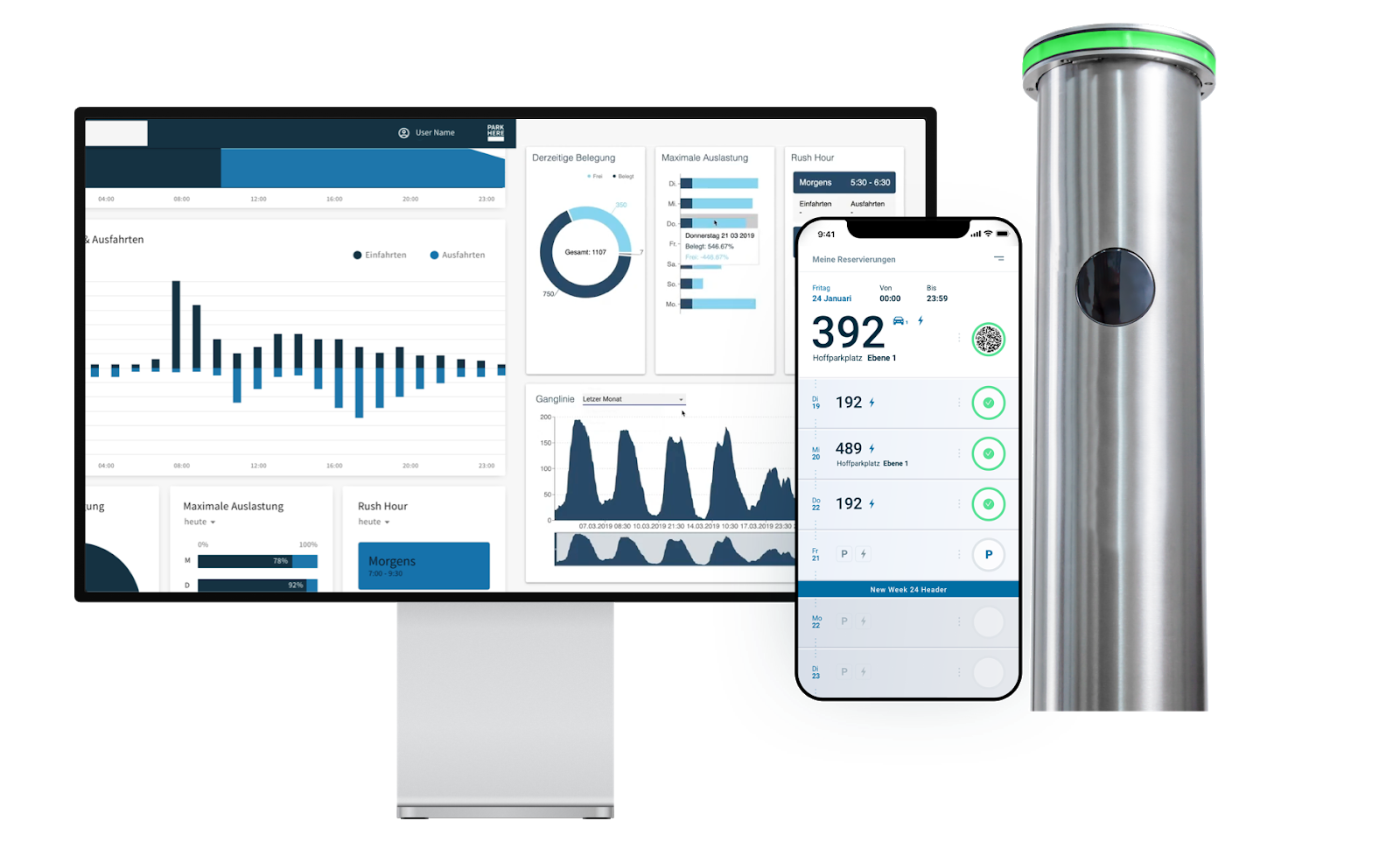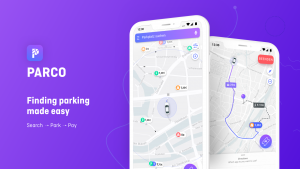Especially the off-road vehicles need a lot of space on streets and parking lots. In inner-city areas, where there is an increasing shortage of parking spaces, this is another hurdle that needs to be overcome. Politics and business are working on mobility concepts that relieve the roads and make optimum use of the available parking spaces. One concept that can be a great help in overcoming the problem is shared parking.
The basic principle of Shared Parking
The concept of Shared Parking is based on the same foundation as Car-Sharing. A parking space that is not in use for a certain period of time is made available to other drivers by its owner. These can be private individuals in residential areas as well as companies with their own employee parking spaces.
Shared parking is an interesting concept in many respects, especially for businesses.
Still 85% of all employee parking spaces are not optimally utilized due to outdated allocation procedures. If an employer allocates
its parking spaces according to the “first-come first-serve” principle, new employees are disadvantaged from the first day of work. This leads to a feeling of low esteem and can quickly affect the working atmosphere and motivation.
In addition, the fixed allocation of parking spaces is not very profitable for the company, since not every parking space is used completely at all times due to home office, vacation or business trips. Often the allocated parking spaces are vacant while other employees have to park on the surrounding streets.
Equal treatment in the allocation of parking spaces
Shared parking enables the employer to allocate parking spaces in such a way that almost full utilization of all parking spaces is guaranteed. If a parking space is not occupied on a particular day because the employee is in his or her home office, for example, someone else can use the parking space on that day.
The system also works for companies with shift operations. Colleagues from the night, early and late shifts can alternate in occupying the parking spaces, as they only need the respective parking spaces within their own working hours, while the employees from the other shifts are still at home.
So nobody is preferred and everybody gets the same chance to get a parking space.
More advantages for the employer
Through a shared parking strategy, the employer is able to maintain a pleasant working atmosphere in which all employees, regardless of their company affiliation, feel valued. However, this is not the only advantage for the executive floor.
With this parking management system, it is possible for every employee to reserve a parking space for a limited period of time. This leads to multiple occupancy of the parking spaces, in total to higher income from rental costs and thus to a higher total turnover of the company.
ParkHere helps with the organization
Managing the company’s own parking space according to the shared parking concept confronts every company with the question of how to integrate this system into the everyday life of its employees. ParkHere is committed to intelligent parking management and supports companies in integrating systems that enable shared parking.
For example, ParkHere solutions include all the necessary components needed to make the best possible use of the company’s own parking lot.
- Via the dashboard, the company is able to collect, manage and analyze the complete parking data. For example, real-time data on incoming and outgoing vehicles can be viewed at any time. In addition, bookings can be made and account data created.
- Using the reservation system with its own app, employees can create their profile including license plate data and reserve, book and even pay for a parking space at the desired time.
- The intelligent terminal at the entrance of the parking lot recognizes the license plate data of the vehicle, compares it with the data stored in the system and opens the barrier in real time.

Figure 1: Dashboard, App and Terminal
Management of public parking spaces
The concept of sharing parking spaces can also be applied to public spaces. Ultimately, public parking spaces can be used for any vehicle, either free of charge or with a charge. However, German cities do not indicate whether and where exactly there are free or occupied parking spaces. Vehicle owners are therefore always forced to look for free parking spaces. Payment for such parking spaces is usually still made via ticket machines.
Shared Parking is based on technical innovations that help to find and allocate parking spaces. In order to optimize the management of public parking spaces, drivers must be mobile and reachable in their cars to guide them to the free parking spaces.
PARCO – An app that needs it
Providers of such systems are already on the market. PARCO, for example, is an app that tackles and solves precisely the problems of finding public parking spaces. Users of the app can view free parking spaces on the side of the road and in parking garages in the app and can be navigated to them by the shortest route.
Payment is also made via the App. All the driver has to do is enter his or her license plate data in the app. To park, the parking zone is confirmed on the smartphone and the desired parking time (up to the maximum prescribed parking time of the respective space) is entered. The parking meter then starts automatically, but you can easily extend it if the parking time is too short. In some German cities, a vignette is required to check the parking time. This can be downloaded from the PARCO website.
If the parking time is not as long as initially specified, you can cancel the process beforehand – only the actual parking time is calculated.

Figure 2: PARCO App
Resident parking – the great benefit
Residents in the immediate vicinity of companies with large company parking lots could also benefit from the shared parking concept, as public parking can be combined with the employee parking lots of neighboring companies.
Managing directors can rent their company-owned parking spaces to residents from the neighborhood if they are not needed outside of business hours, for example during weekends or company vacations.
Car drivers already have the necessary technical aids at their disposal with apps such as PARCO, which allow them to reserve and pay for parking spaces at the touch of a button. This eliminates the long search for a free parking space, which leads to fewer traffic jams on the streets and in turn has a positive effect on the air quality in the city.
The companies generate additional income by renting out the space without endangering the free choice of space for their own employees. The money could be used to finance further mobility concepts that make community parking easier. A situation that gives both parties to the scenario enormous advantages.
Conclusion – synergies are the future
Innovative mobility concepts, such as shared parking, will be an important part of future urban and road planning.
Companies that make their parking spaces available to the general public at certain times, apps that make it easier to find free parking spaces and politicians who are open to new parking space management techniques will develop synergies and play a significant role in the mobility of the future – a future with less search traffic and cleaner air.
